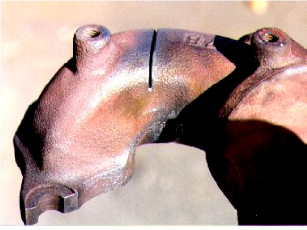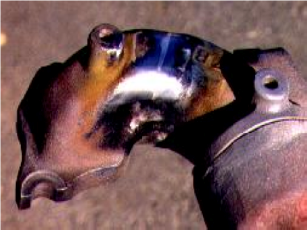The strongest brazing rod made for joining cast iron and steel, HTS 528 is thin flowing
for close – fit joining and repairs on all cast iron, steel, copper, bronze, nickel,
and brass. It will also effectively join dissimilar metals. Master welders rate its
wetness on ferrous and non-
HTS-
Tensile Strength: 102,000psi
Elongation: 30%
Bonding Temperature: 760*C
Flow: excellent
AWS SPEC: A5.7
Hardness: 92 Brinell
Fuming: Low
Instructions for the use of HTS 528:
Melting the base metal is not necessary since the 528 rod has built – in flux. Consequently, clearance should be around .003 for maximum tensile and shear strength. The 528 rod takes extreme heat, above 760*C to penetrate the pores of the metal so you will need oxygen and gas to produce this heat. HTS 528 can be used to braze cast iron, brass, nickel, copper, and more than 50 different kinds of steel, including stainless. Open the pores around the area to be repaired, drill, and grind out a U shape in the metal, so it is no longer a hairline crack.
We recommend first practicing with cast iron by grinding a slot, 1.5mm to 3mm into the metal. Use a brazing tip to bring the metal to 760*C. The metal will start to turn red at 315*C, but continue heating, test the rod on the metal 6mm outside the bulk of the flame. The rod has a flux core that will melt much lower than the rod, so if the rod itself will not melt, have patience. When you are close to 760*C, it will look like you are going to burn a hole in the metal but don’t worry. Once you see the rod itself is melting, scratch the rod all around the area to be repaired. The rod will melt and, with the help of the flux core, will fuse down into the metal.
When you pull the torch away, it will be cherry red for about 20 seconds. If you have followed the instructions explicitly and scratched the rod all around the area to be repaired thoroughly allowing the flux to mix with the melted rod you will have the strongest weld possible on that particular metal. You may then grind, shape, polish, and paint as desired.
If you have followed the instructions but still need advice, do not hesitate to contact us.



HTS – 528 Brazing Rod